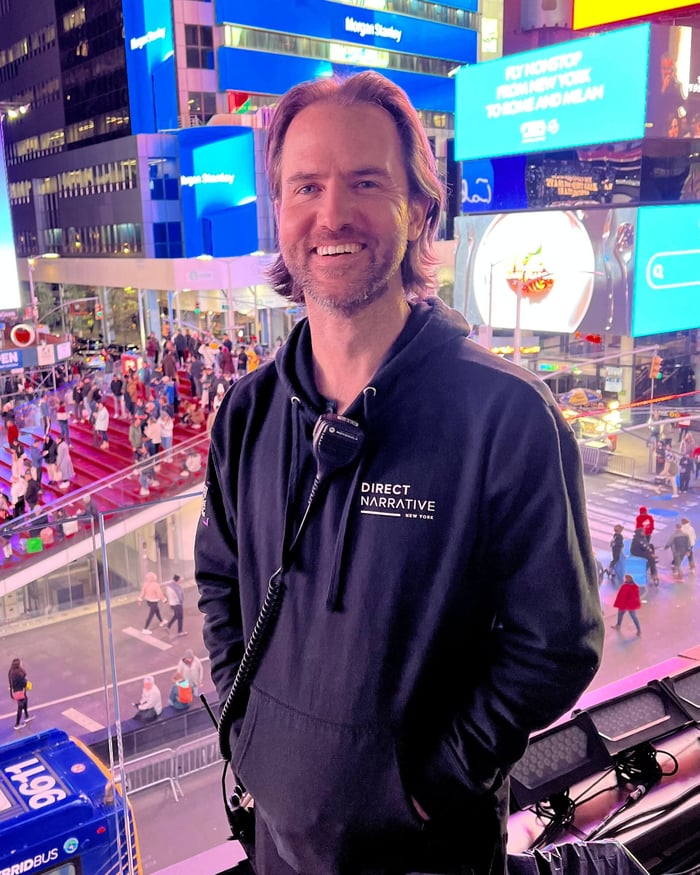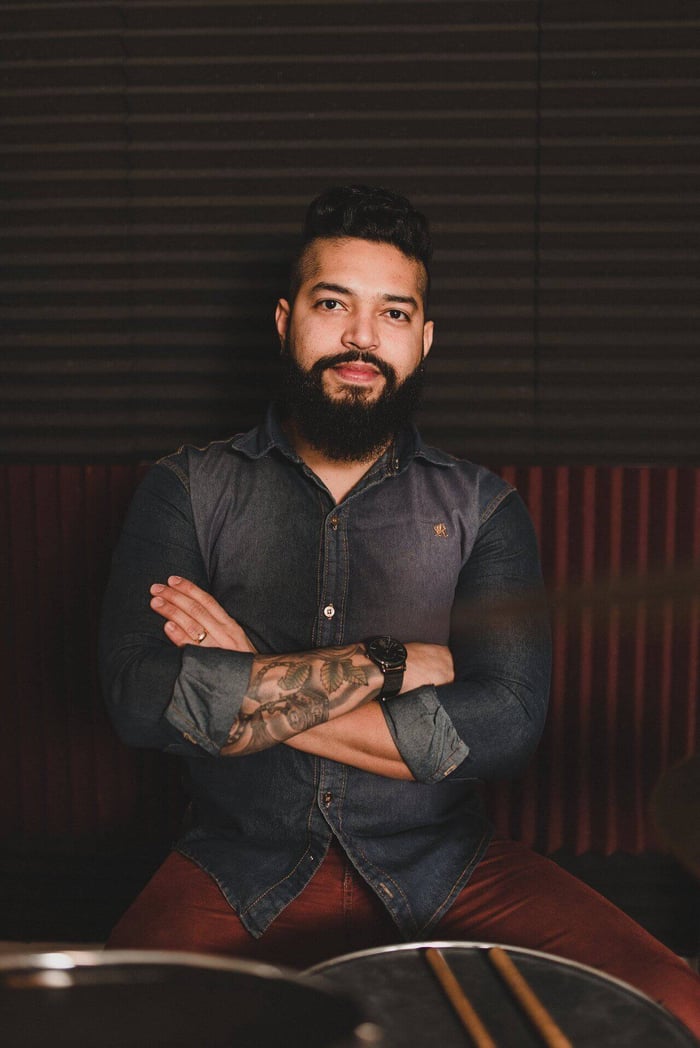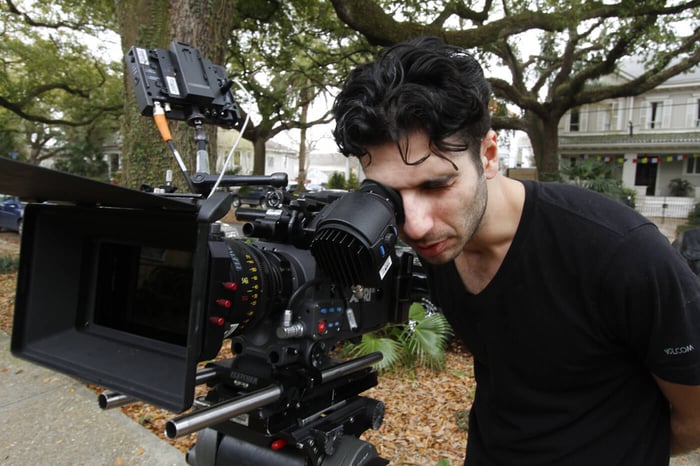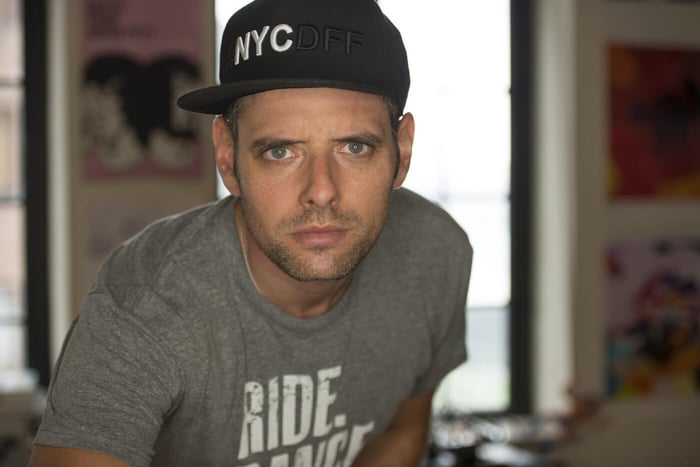Welcome to another installment of our Creator Spotlight series, where we feature talented creative professionals in our community. Today, we sit down with Andrew Coury, the Founder of Direct Narrative, a full-service creative agency based in the heart of New York City. Andrew is a producer, director, and editor whose work spans a wide range of projects, driven by a core passion for storytelling.
Talk to us about the beginning of your career and how you got started. The really early days.
My passion for video production actually began through photography. My dad has always been an avid photographer, so at a very young age, he taught me the fundamentals of composition, exposure, and encouraged my brother and I to develop film in the darkroom. There was a while where our bathroom was converted into a makeshift darkroom and we'd spend countless hours developing negatives and dodging / burning resin coated photographic paper to get just the right look in the final image.
It wasn't until shooting with the Canon 5D Mark III that I started organically experimenting with video. This is the time where I completely fell in love with the process of creating content and capturing an audience. It's through video that I really fell in love with the art of storytelling.
My very first video project was a home video created during a family motorhome trip to the Badlands in South Dakota. We spent a week waking up every day at the crack of dawn to shoot wild horses roaming free and every night when we got back to the motorhome, I'd stay up late scrubbing the footage and making selects from the day. Our guide and photography teacher, Pat Gerlach, asked to see the film at the end of the week and it was seeing his reaction and hearing his feedback that was an impactful experience for me. I truly loved "premiering" a film and from that experience onward, I was completely hooked.
What was an example of a project that really helped you find your way or push you out of your comfort zone?
That’s an easy answer: Beer Boom. It’s a feature length documentary that I produced, directed and edited, alongside Eric Schleyer, and I learned so much in the process of producing Beer Boom.
I never went to film school; I'm self-taught, and I learned so much during the creation of Beer Boom that that film became my film school. Learning some hard lessons throughout that process was challenging and rewarding and I believe it's truly molded my approach as a producer. We spent multiple years without a paper edit... a huge mistake! But this hard learning allowed the film to evolve in an organic way that gave the film character and a unique approach that we might not have otherwise taken.
I've found that I genuinely love documentary filmmaking – finding interesting narratives and helping people share their stories with the world.
Through that filmmaking process, we met our lead character, Rich Castagna, a gritty Queens-born native who embodies the hard-working, do-it-yourself New Yorker spirit. The film ended up documenting Rich's challenges as he built Bridge and Tunnel Brewery from a garage-based homebrew operation to a 2,300 sq/ft production facility and taproom in Ridgewood, Queens. The film found its heartbeat in Rich's story and his journey working without financial backing or investors, using his family's life savings to make it all happen.
What made this project particularly challenging was that it took over five years to create, from start to finish. At the time, I had no idea the approach that we SHOULD have taken and so much of the project was learning the hard way. But honestly, I wouldn’t have had it any other way. The filmmaking lessons learned along the way remain with me on every project I produce.
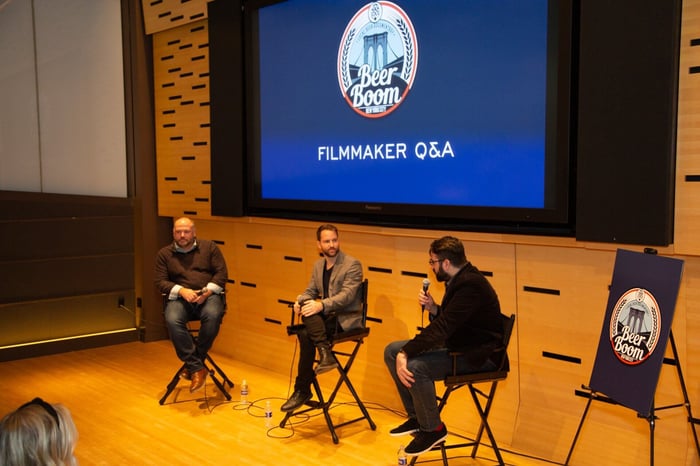 Beer Boom discussion at Lincoln Center
Beer Boom discussion at Lincoln CenterTalk about your post-production workflow and how Glyph has been a part of that.
Since those hard learnings on Beer Boom, I’ve always maintained that pre-production is the most important part of the video creation process. For many many years, my primary focus was ensuring pre-production was as tight as possible. However, in the last 5 years or so, I've added to that statement by saying that “post-production is equally as important as pre-production”. Post is where stories are truly made, where beauty emerges, and where the storyteller's ability to fine-tune and engage the viewer truly shines. A really, really tight post-production workflow is essential - and that starts with solid media management.
One of the things we've implemented recently at Direct Narrative is integrating SSDs directly into our shooting process. Anytime we're shooting on a Blackmagic Pocket 6K Pro, we plug a Glyph EVCam directly into the camera. This is a game-changer because when we get back to the office, we can plug the SSD right into the computer, and there's absolutely no time lost in media management or data transfer. In many cases, we're literally editing directly from the drives we shot on. Sometimes we consolidate a few SSDs onto a master drive, but the core workflow involves using SSDs during shooting to make the editing process faster.
On my desk, I have a collection of Glyph tech that is crucial to my daily work. I plug my laptop directly into a Glyph Dock that allows me to connect to all my peripherals (monitor, ethernet/NAS server, focusrite, mouse/keyboard) and also connect to a Glyph Blackbox Pro RAID (32TB) which is setup for automatic backups of my laptop.
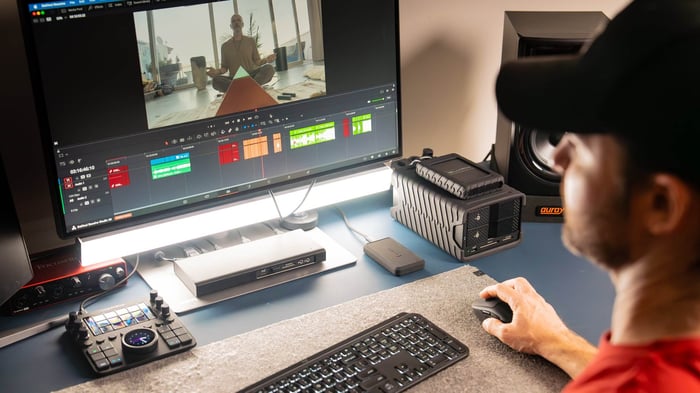
I've also been using the Blackbox Plus U.2 all the time when I'm at the office or on the road. The fact that it holds 7.6TB of data in such a small footprint is unreal. I'm able to travel with a massive client project (2.5TB) a documentary project (3TB) and some of my personal drone projects (1TB) and still have space left over!
My absolute favorite drive, however, is the Glyph Atom Pro NVMe. It's my favorite because it's the fastest drive I've ever used. As an editor, speed is paramount. I want to get my thoughts out on the timeline as quick as possible, and waiting for rendering tends to slow down my flow state. We're constantly doing multicam shoots w/ 4k and 6k cameras, and this really is the only drive that I can find that doesn't throttle speeds on me. The Glyph NVMe drive is unbelievable; it's blazing fast and maintains sustained speeds better than any other drive on the market. I absolutely love it.
Can you talk about other recent projects that you really enjoyed?
Yes, I recently produced and directed a seven-camera live stream for DJ Charlotte de Witte, with Beatport as the end client. What was amazing about this project was the extremely tight turnaround: an overnight edit and a same-day delivery. The most fun part was that it was a block party on the Lower East Side, on Orchard Street, which is the street I lived on when I first moved to New York 12 years ago. It was really cool to be part of producing a video for such a big DJ in a place with personal significance.
Charlotte announced the event on social media in the morning, and by 3 PM, the block was completely packed, standing room only, and Beatport wanted the deliverable to go live by 7AM the next morning. Our workflow was key here: we shot all the footage directly to SSD drives on Glyphs. When we returned to the office, we immediately began the overnight edit. We utilized a remote production workflow where an off-site video editor logged into our office computer, via Parsec, and edited directly from our edit machine.
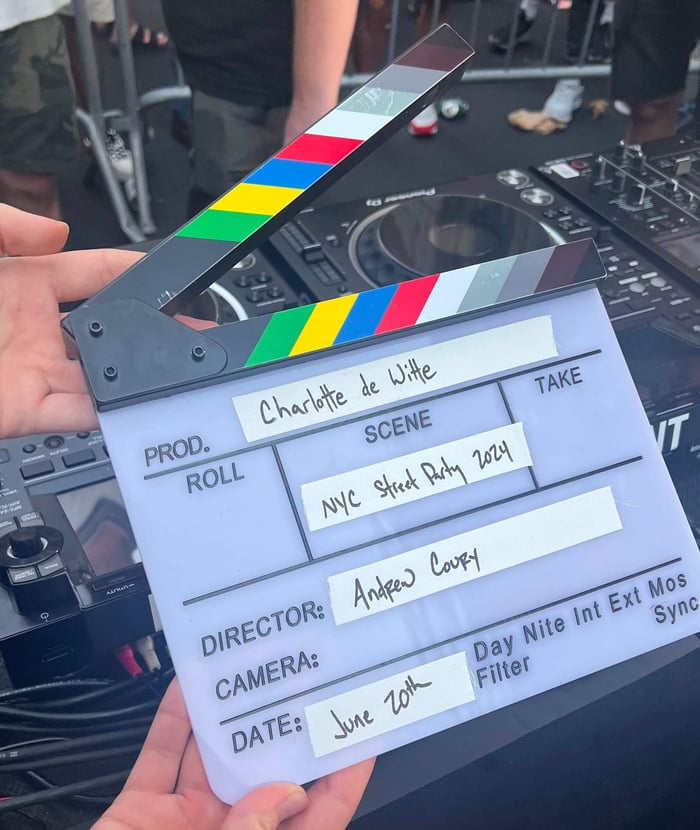 Production slate for the June 20th 2024
Production slate for the June 20th 2024
Charlotte de Witte performance
This workflow allowed us to record all the media onto the SSD drives and then simply plug them into our edit machine upon returning from the shoot. We shot over 2TB of footage, and didn't need to upload, download, or use any cloud management. We just plugged the drives in, and the editor worked through the night. By 7 AM the next day, the video was ready for distribution on YouTube and social channels – color corrected, multicam, perfect audio, perfect color, from seven cameras. It was a memorable experience that perfectly showcased the importance of a well-thought-out post-production workflow before hitting the record button.
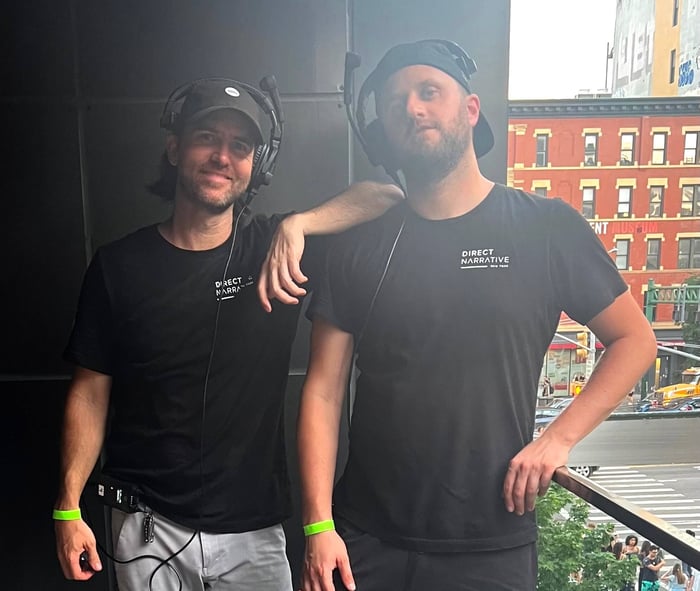 Behind the scenes at Charlotte de Witte
Behind the scenes at Charlotte de Witte
You work across a wide spectrum of media, from social campaigns and documentaries to narrative fiction and animation. As a Producer and Director, how do you approach translating a core brand message effectively across such diverse formats?
My approach is to first identify the goals and the essence of the brand's messaging. Like any good producer / director, you have to see the big picture and understand the tone.
A documentary like "Beer Boom" allows for deep character development and a long-form narrative arc. A social campaign requires bite-sized, visually striking content that grabs attention instantly. Being a producer for Charlotte de Witte's multicam edit required a unique approach to media management and remote workflows. The format dictates how we express that core essence – the pacing, the visual style, the sound design, the length, the level of detail. But the underlying goal of what we are trying to accomplish must remain consistent.
It's about using the strength of each medium to make that story as compelling as possible.
What are some of your challenges? As a filmmaker and business owner?
I think the biggest challenge has always been juggling everything. Being a creative is an all encompassing endeavor, and being an entrepreneur is as well. Doing both at the same time is a unique challenge that I've been tackling for over a decade now. There have been tons of learnings on how to balance both, but the fun part is I truly enjoy the challenge.
Thanks for chatting with us, Andrew! We appreciate you sharing your insights and workflows. It’s always great to hear from members of our community who are using Glyph drives to their full potential!


